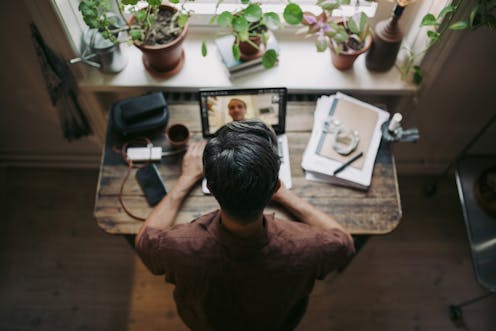The age of hybrid working is here – how can businesses find the right mix between office and home?
- Written by The Conversation

After more than two years of disruptions, lockdowns and uncertainty, employers are facing a new reckoning in 2022: getting staff back into the office.
Dubbed by some the “great hybrid return to work”, employers across a range of industries are being forced to consider what the work environment will look like for staff.
In an environment where labour is tight, just how much can businesses prod employees to come back into the office? And how can bosses design a solution to meet the needs of the collective after more than two years of work-from-home flexing where individual choice has reigned supreme?
This reckoning isn’t isolated to New Zealand, with stories from the United Kingdom, the United States and Australia painting a picture of a world that has fundamentally shifted, and the dawn of what may well become the work-from-home decade.
Granted, not all employees can work from home. Some never have, as they’ve continued to show up on the front line in hospitals, grocery stores and emergency response call outs. But research suggests those who got a taste of working from home are hungry for more.
Placing emphasis on coordination
A 2022 report from Stanford University heralds the benefits of a hybrid approach to work, acknowledging that most – but not all – staff benefit from a bit of time at home and a bit of time in the office.
Read more: Stressed out working from home? Consider a hotel day pass
The Stanford recommendation is to coordinate the return to the office with agreed days (for example, Tuesday through Thursday in office, Monday and Friday at home) and reassess at the end of the year to create a long-term plan.
This copy and paste plan certainly won’t work for all workplaces but it suggests there is some merit to a coordinated approach.
Fairness as key
Social connection isn’t the only reason some researchers are advocating for a hybrid working model where teams come in on the same agreed-upon days.
This approach can maximise fairness and equity, thereby boosting diversity and inclusion. Having teams in one place at the same time ensures equitable information transfer and opportunities for development and promotion.
This could be especially pertinent for working parents, who may already face difficulty or discrimination from working flexibly or taking parental leave, and for minority groups that have traditionally been pipped at the post for promotions or mentoring opportunities.
Read more: Working from home: How classism covertly dominated the conversation
Fairness, one of the key protective factors against burnout at work, helps to offset feelings of cynicism, anger or indignation.
Decisions about returning to the office should be transparent and clearly communicated. And while individual approaches may be necessary, plans for work should equally advantage all groups – senior leaders and entry-level graduates alike.
Ask, don’t assume
What works for some won’t work for all, so employers should talk to their employees. This simple advice applies as much to the general well-being of employees as it does to the structure of the work week.
By engaging in genuine conversations with staff and including them in the decision making process, leaders can build and maintain a level of trust that is essential to a strong culture of well-being in the workplace and can ensure the diverse needs of employees are met.
While everyone is neck deep in the process of discovering a new normal, employers should take the opportunity to really tap into the specific wants and needs of their employees by implementing a consultation process.
This may mean providing various options for people to give input, such as informal check-ins (face-to-face, text or otherwise) or more formal meetings and forums; this formal and informal communication can be complemented by anonymous employee surveys to capture opinions that some people may find hard to give in person.
This is a once-in-a-lifetime opportunity to launch a new way of working that meets the needs of employees and allows them to participate in the process of strengthening support and well-being in the workplace.
Build back better
While many leaders may bemoan the reluctance of their employees to return to the office, citing a reduction in collaboration and information sharing in the work-from-home setup, it’s worth asking whether pre-COVID office spaces really that much better.
Open plan offices, the norm for many modern workplaces, can actually increase stress responses in the body and, paradoxically, reduce collaboration, well-being and engagement.
How do businesses strike a balance between opportunities for collaboration and information sharing, while protecting an employee’s individual well-being?
With the aim to build back better, employers need to consider adapting office space in a way that is fit for connection as well as focus, with multiple breakout spots, intentional collaboration opportunities and quiet working zones.
Businesses should harness the power of hybrid working too – perhaps utilising work-from-home days for deep work, with a “no meetings” rule and reserved in-person office days for collaborative working and catch-ups.
The next six months will undoubtedly be a period of trial and error for many businesses as they look to encourage workers back to the office. Following the simple rules – “ask, don’t assume” and “keep it fair” – may go a long way to ensuring the return to the office is helpful for employees and organisations alike.
Gaynor Parkin and Dr Amanda Wallis from Umbrella Wellbeing contributed to this article.







